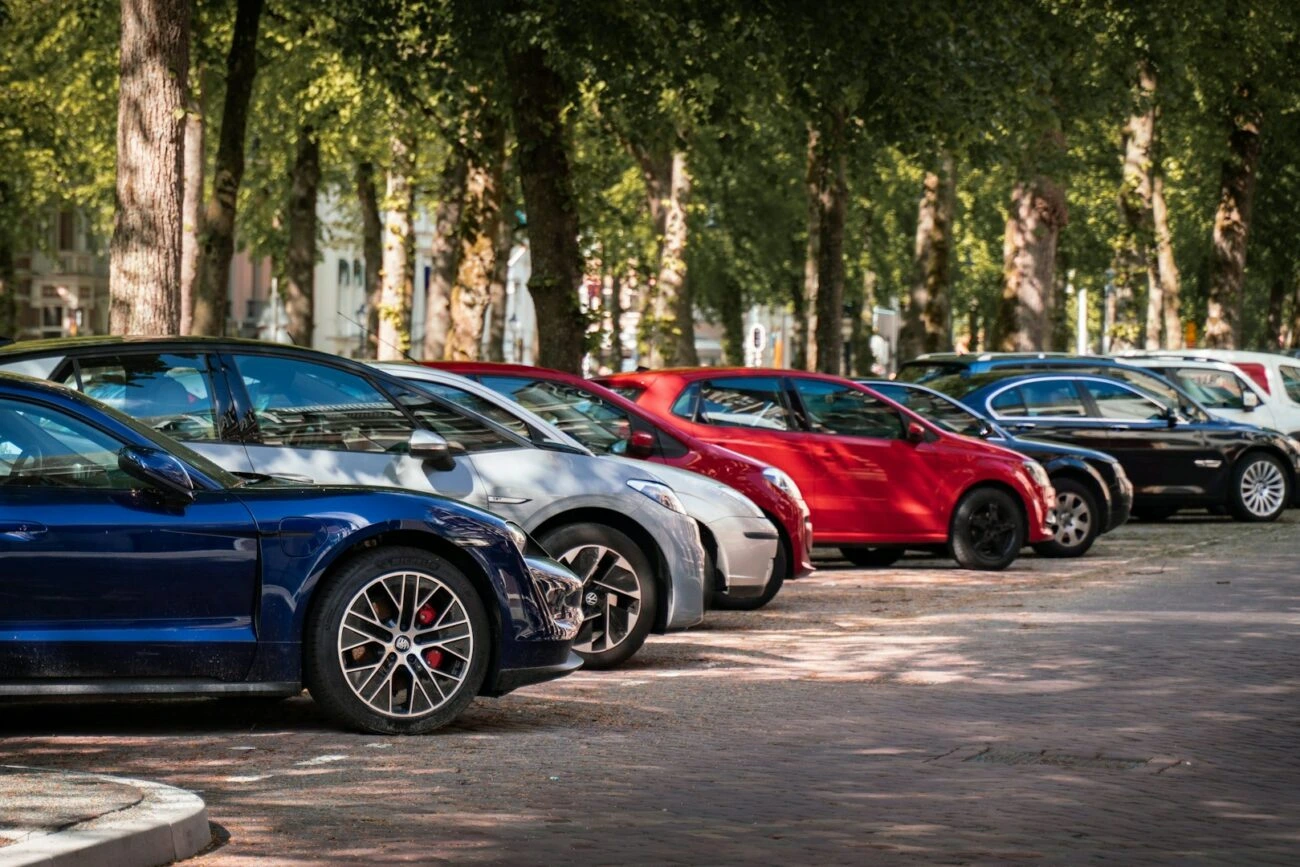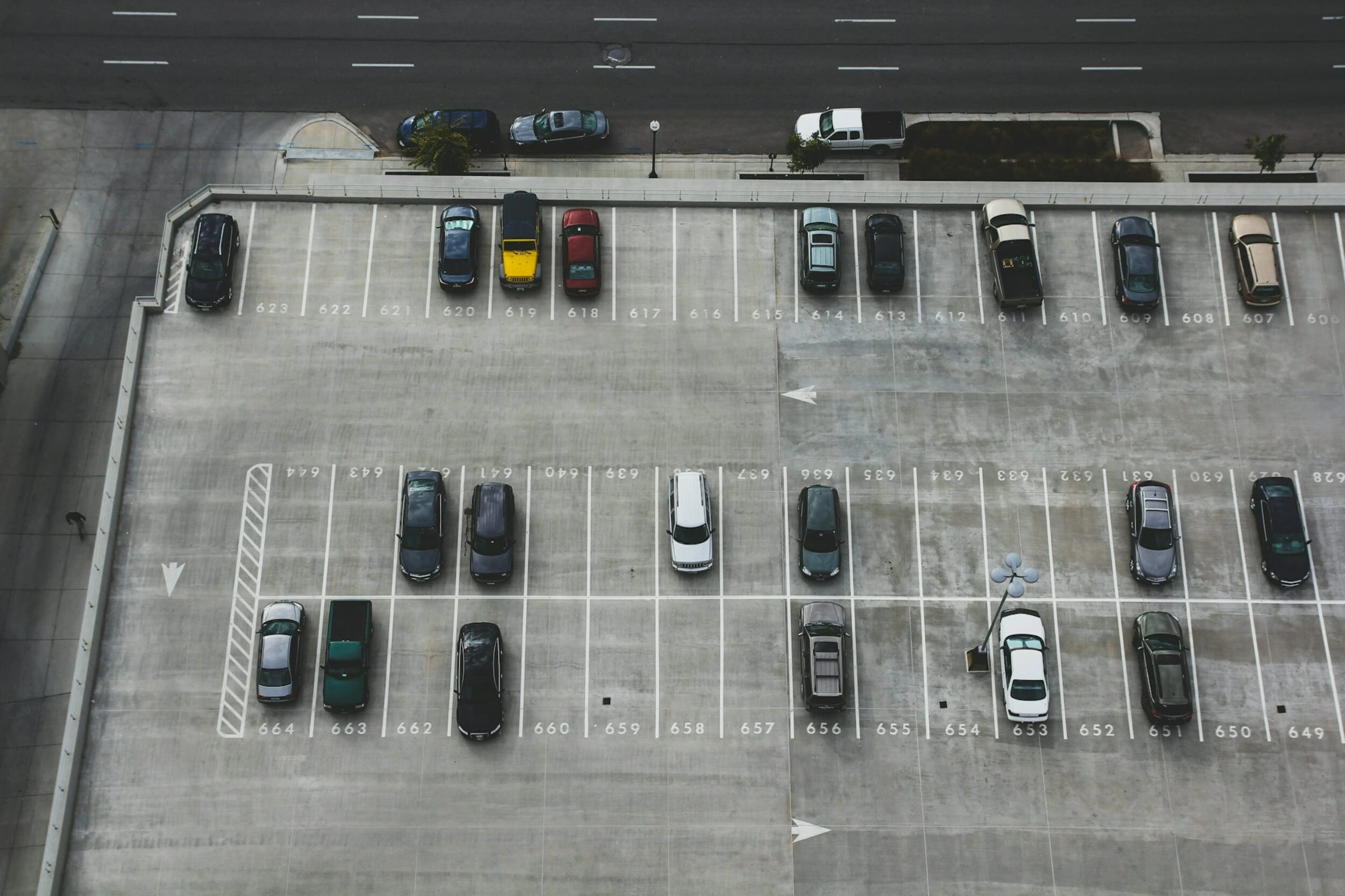Zone-Specific parking regulations for roadside parking spaces
Belgium has different parking zones, each with specific rules and rates. It is crucial to understand these zones so that you know what to expect and can avoid unpleasant surprises.
Blue zones
In blue zones, you can usually park for free but only with a parking disc. You must set this disc to your arrival time, and you can typically stay for a maximum of two hours. This system encourages frequent turnover of parking spaces, ensuring more availability. Blue zones are often found in shopping areas and urban centers.

Paid parking zones
In busy areas and parking lots, you will typically find different paid parking zones. These zones are often color-coded to indicate the applicable rates and parking restrictions.
Some zones allow all-day parking, while others impose a limit of three to five hours. These are usually located in high-traffic areas and come at a higher cost. When visiting a city, it's always a good idea to check parking options in advance to avoid unexpected fees.
Residential zones
In addition to general color-coded zones, there are also special residential zones where only residents with a permit can park. These zones help ensure that local residents do not struggle to find parking due to visitors or commuters.
Parking spaces for electric vehicles, loading and unloading, and disabled parking spots are also designated as special zones, often with specific rules and restrictions.
Parking in cities and municipalities
Each city and municipality in Belgium has its own parking regulations. In major cities like Brussels, Antwerp, and Ghent, parking rules are often stricter, with limited available spaces. Each city has its own parking zones and fees.
On public roads, there are specific rules regarding parking and stopping. It's important to know where parking is prohibited but stopping is allowed. Parking meters are common, and some areas require special resident permits.
Parking on a two-way street opposite another parked vehicle is prohibited if it obstructs traffic flow. If you are parking on a public road with two lanes, cars must be able to pass freely.
Parking bans and restricted zones

Belgium has strict regulations on where you absolutely cannot park. For example, a parking ban applies where a yellow broken line is marked—you may stop but not park.
Parking bans also apply to yellow curbs, driveways, less than five meters from an intersection, and the middle lane of a three-lane road on public streets.
Restricted zones, such as loading and unloading areas, are often reserved for specific times and purposes. Disabled parking spaces are only for those with a valid permit. Rules for stopping and parking in restricted zones must always be followed.
Still unsure? Always check local laws to avoid fines.
Fines and penalties
If you violate parking rules in Belgium, you may face fines or worse. Illegal parking can result in on-the-spot fines, wheel clamps, or even towing of your vehicle.
The amount of the fine depends on the severity of the violation and the municipality. It is possible to contest a fine if you believe it was wrongly issued, but this must be done quickly with proper documentation.
Alternative parking options
For those who wish to avoid parking in busy city areas, Belgium offers several alternative parking solutions.
- Park & Ride (P+R): These parking facilities are located on the outskirts of the city and provide a low-cost or free parking option, combined with easy access to public transport.
- Shared Parking: Platforms like SparkSpot connect private parking space owners with potential renters for short-term parking. This increases parking availability and makes parking more flexible and convenient.
Conclusion
Parking in Belgium can be challenging, but with the right knowledge and tools, it becomes much easier. By familiarizing yourself with general parking rules, specific zones, and city-specific regulations, you can avoid fines and unnecessary stress.
Alternative options such as Park & Ride and shared parking provide great solutions for optimizing your parking experience.
At SparkSpot, we strive to make parking more accessible and efficient for everyone. Wherever you are and whatever your parking needs, we have the solution!Frequently Asked Questions
How do you know if parking is allowed?
You can determine if parking is allowed by carefully checking traffic signs and markings. Blue lines often indicate that a parking disc is required, while yellow lines mean parking is prohibited. Always pay attention to signs specifying area-specific parking rules.
Where is parking prohibited?
You cannot park in areas marked with a yellow line, in front of driveways, on sidewalks without special markings, within five meters of an intersection, in loading zones, disabled parking spaces without a permit, and areas with a no-parking sign.
What rules apply in a parking lot?
In a parking lot, you must park within designated spaces and respect the maximum parking time. Paid parking requires a ticket or a digital parking app. Always park only in designated areas and not in spaces reserved for disabled parking without a permit.
Where can you park within built-up areas in Belgium?
You may park anywhere within a built-up area where parking is not explicitly prohibited by signs or markings. This includes streets, parking lots, and garages. However, pay attention to specific area rules, such as blue zones (parking disc required) and paid parking zones (ticket required).










